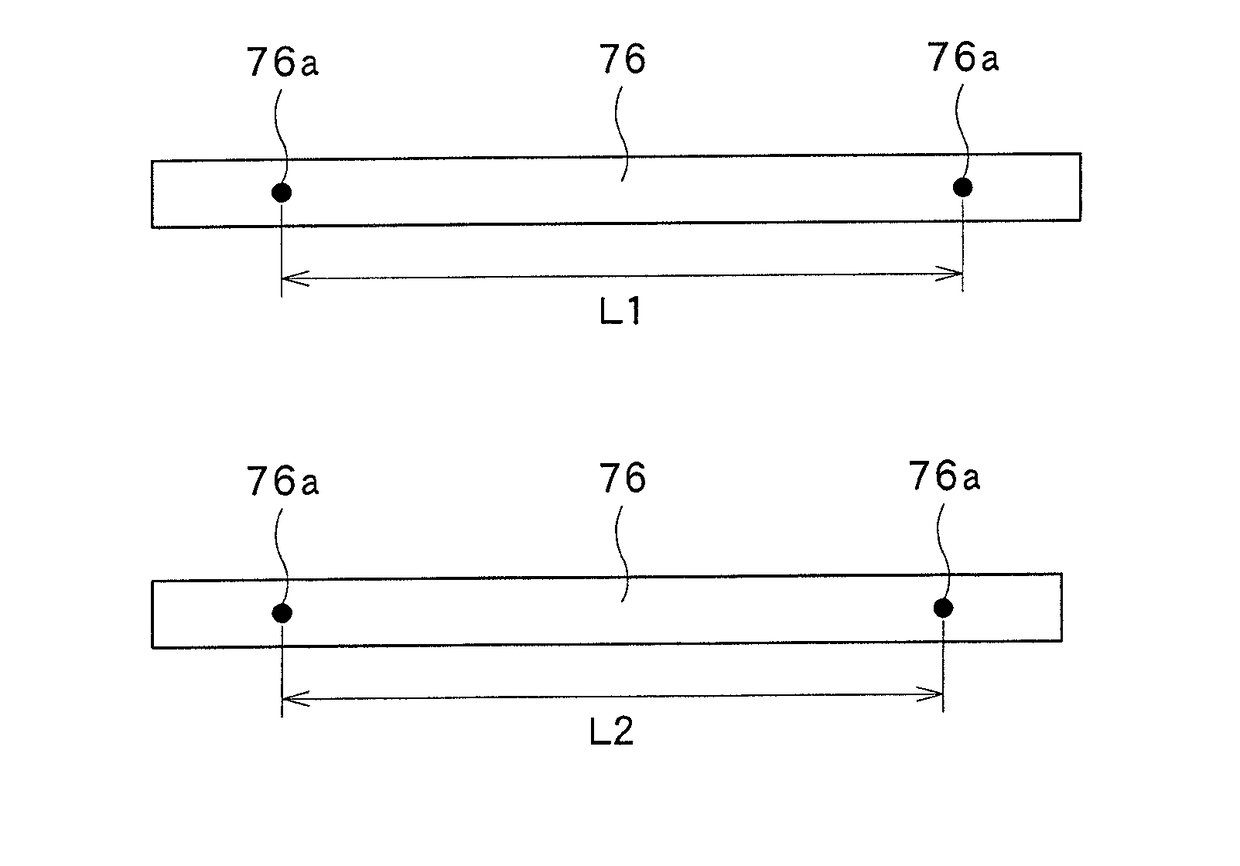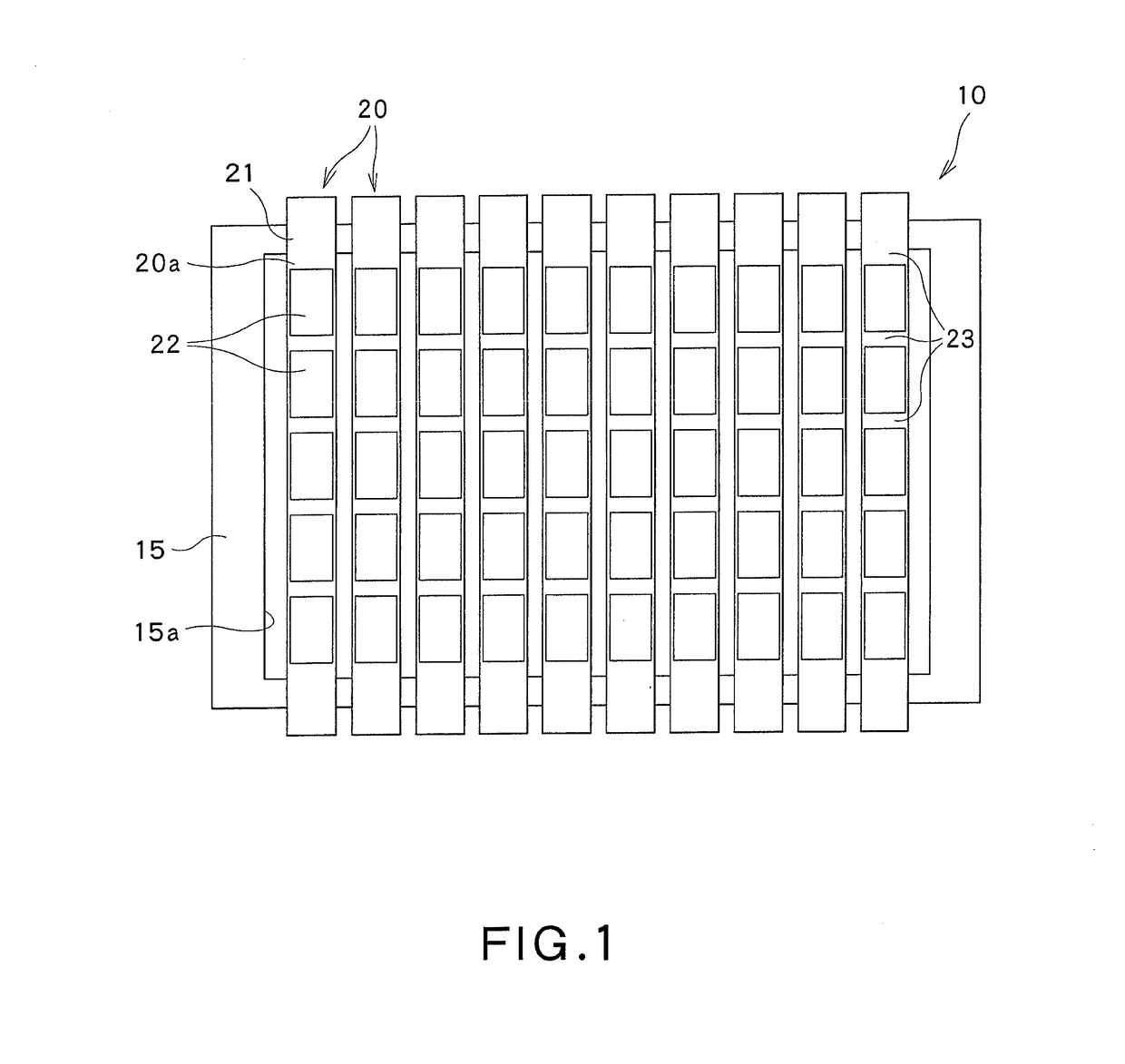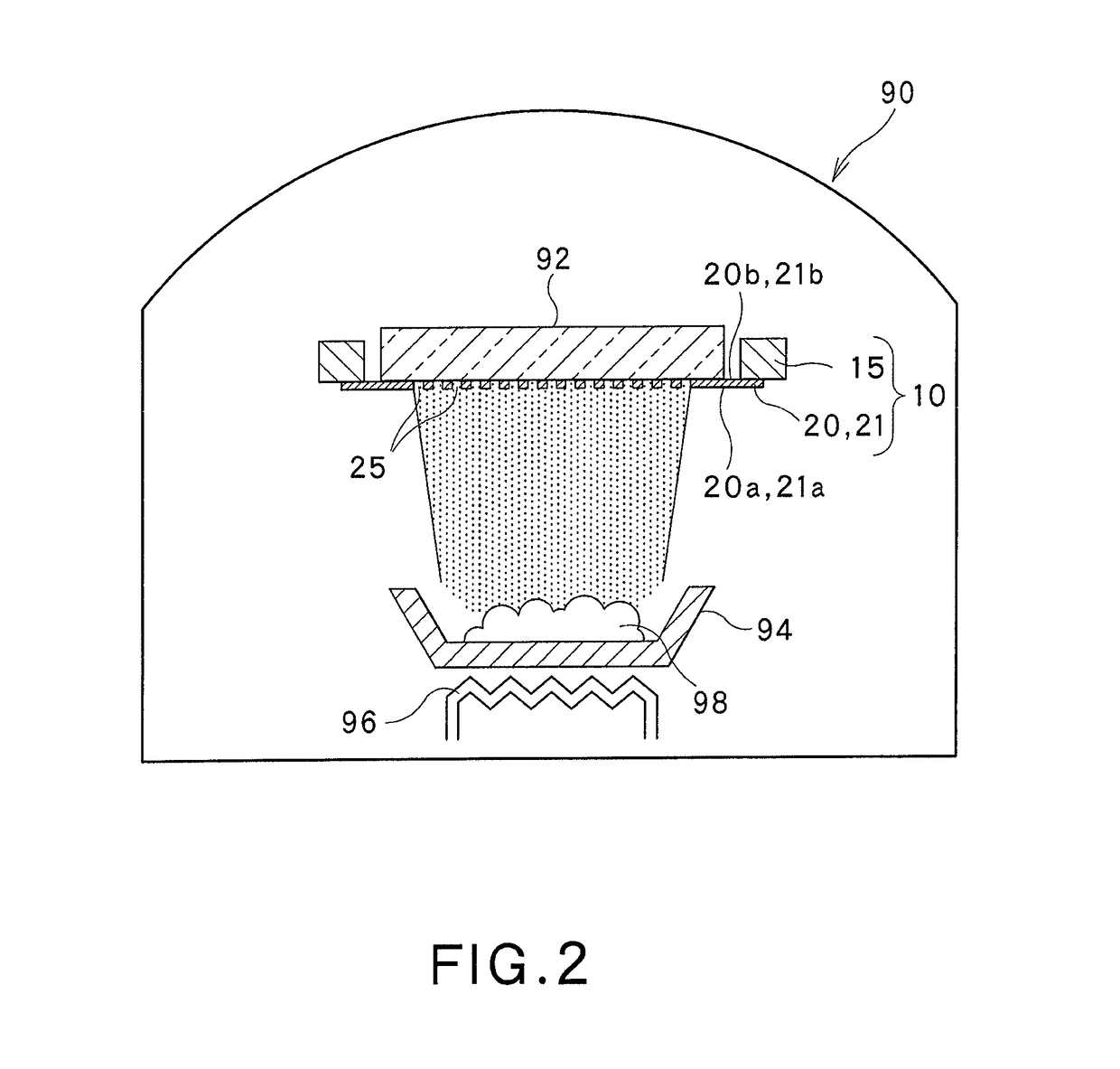Metal plate
a technology of metal plates and rolled metals, applied in the field of metal plates, can solve the problems of reducing affecting the luminous efficiency of the organic el display device, so as to reduce the dimensional precision of each pixel and the positional precision of the pixel
- Summary
- Abstract
- Description
- Claims
- Application Information
AI Technical Summary
Benefits of technology
Problems solved by technology
Method used
Image
Examples
examples
[0170]Next, although the present invention is described in more detail referring to examples, the present invention is not limited to the below examples as long as it departs from the scope of the present invention.
First Winding body and First Sample
[0171]Firstly, by performing the aforementioned rolling step, the slitting step, the annealing step and the cutting step were performed to the base metal made of the invar alloy, a winding body (first winding body) around which an elongated metal plate was wound was manufactured.
[0172]To be specific, a first rolling step, in which a first hot rolling step and a first cold rolling step were performed in this order, was firstly performed. Then, a first slitting step, in which both ends in the width direction of the elongated metal plate were slit over a range of not less than 3 mm and not more than 5 mm, respectively, was performed. Thereafter, a first annealing step, in which the elongated metal plate was continuously annealed at 500° C. ...
PUM
| Property | Measurement | Unit |
|---|---|---|
| temperature | aaaaa | aaaaa |
| temperature | aaaaa | aaaaa |
| temperature | aaaaa | aaaaa |
Abstract
Description
Claims
Application Information
 Login to View More
Login to View More - R&D
- Intellectual Property
- Life Sciences
- Materials
- Tech Scout
- Unparalleled Data Quality
- Higher Quality Content
- 60% Fewer Hallucinations
Browse by: Latest US Patents, China's latest patents, Technical Efficacy Thesaurus, Application Domain, Technology Topic, Popular Technical Reports.
© 2025 PatSnap. All rights reserved.Legal|Privacy policy|Modern Slavery Act Transparency Statement|Sitemap|About US| Contact US: help@patsnap.com



